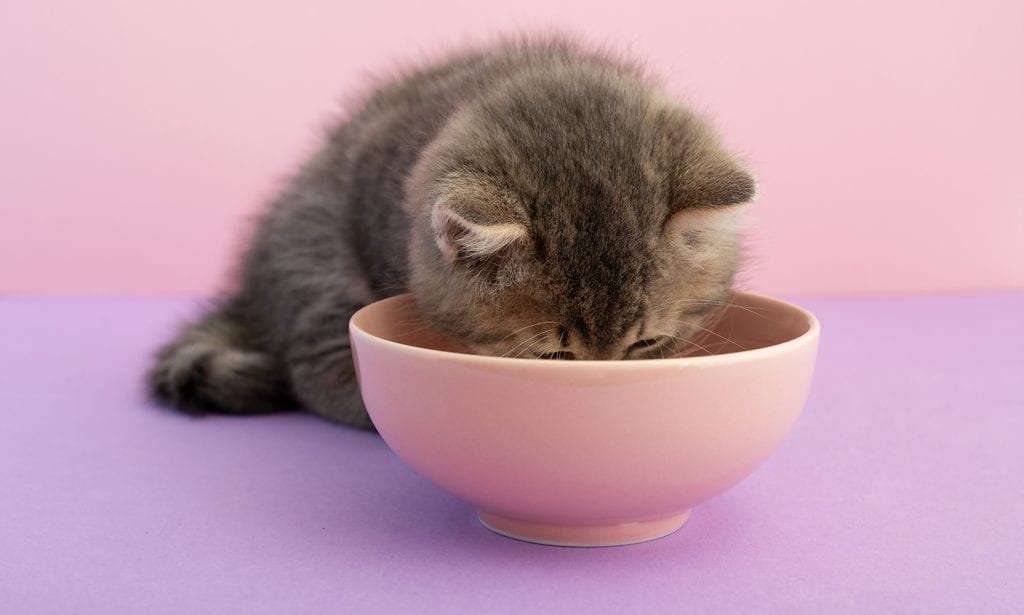There are approximately 3.5 cups of dog food in a pound. Dog owners often wonder about the amount of dog food in a pound.
Understanding this can help them properly portion their pet’s meals and ensure they are receiving the right amount of nutrients. Additionally, knowing this information can aid in budgeting and planning for their pet’s food needs. Proper nutrition is crucial for a dog’s overall health and well-being, so having an understanding of the measurements involved can be extremely beneficial for pet owners.
By knowing how many cups are in a pound of dog food, pet owners can make informed decisions about their pet’s diet and ensure they are getting the proper portions each day.

Credit: be.chewy.com
Cup To Pound Conversion Factors
When feeding your furry friend, accurate measuring is crucial to ensure they receive the right amount of nutrition. The conversion rate from cups to pounds may vary due to variables such as kibble size and density. Understanding the standard cup sizes in ounces will help pet owners accurately measure food portions. It’s essential to use the right measuring tools and follow feeding guidelines to maintain your dog’s health.
Dry Dog Food Vs. Wet Dog Food
Differences in density and volume: Dry dog food is denser and takes up less space compared to wet dog food. Due to this difference, the conversion of pounds to cups varies between the two types.
Manufacturers’ recommendations: It’s important to follow the feeding guidelines provided by the dog food manufacturers for accurate portion sizes.
Average cups per pound in dry food: The average cups per pound of dry dog food can range from 3 to 4 cups, depending on the specific brand and formula.
Calculating for wet food consistency: When dealing with wet dog food, the consistency differs, making it important to consider the specific product and its water content when calculating the number of cups in a pound.
Measuring Tips For Dog Owners
When measuring dog food, it is important to remember that kitchen scales can provide the most precise measurements. Whether you measure the food by weight or volume, consistency is key for your dog’s feeding routine. By using kitchen scales, you can ensure that your dog receives the right amount of food every time. Measuring by volume can be useful for quick and easy feeding, especially for owners who don’t have a kitchen scale. However, to maintain a consistent feeding routine, weight measurements are recommended. This ensures that your dog receives the correct amount of food for their specific dietary needs.
Brand-specific Feeding Guides
The role of kibble size and shape plays a crucial part in determining serving sizes. Different dog food brands may have customary serving sizes that vary widely. Dogs require a specific amount of nutrients to maintain a balanced diet, and diverging nutritional content among brands directly impacts their overall well-being. Understanding the differences in feeding guides and nutritional content can help dog owners make informed decisions about the most suitable food for their pets.
For example, while one brand’s serving size may equate to one cup per day, another may require only 3/4 cup to fulfill the same dietary needs. It is important to consider these variations in serving sizes and nutritional content when selecting the most appropriate dog food for your pet.
Volume Discrepancies To Watch For
Understanding ‘lightweight’ and ‘heavyweight’ kibbles: When measuring dog food by volume, it’s important to consider the density of the kibble. Lightweight kibbles take up more space per pound, while heavyweight kibbles are more densely packed.
The effect of compressed or aerated food on volume: Compressed dog food will yield a lower volume in a pound compared to aerated food. Compressed food may require a larger container for the same weight.
How to adjust measurements for accurate servings: To accurately measure dog food by volume, account for the kibble’s density. Adjust serving sizes based on the type of kibble to ensure accurate portioning for your pet’s needs.
Tailoring Portion Sizes To Your Dog
When tailoring portion sizes of dog food, it’s crucial to assess your dog’s dietary needs. Consider your dog’s activity level and age when determining the appropriate portion size. Dogs with higher activity levels may require more food, while elderly dogs may need smaller portions. Additionally, adjusting portions is essential for weight management. Be mindful of any weight gain or loss and adjust the food accordingly to keep your dog at a healthy weight.
Consistency In Daily Feedings
When it comes to consistent daily feedings for your dog, it’s essential to establish regular meal times. This helps in keeping track of your dog’s appetite and ensuring they receive the right amount of food. It’s also important to store dog food properly to maintain its freshness. By following these guidelines, you can ensure that your dog receives consistent and healthy nutrition every day.
Transitioning Between Different Dog Foods
Sure, I can help with that. Here’s the HTML formatted response:“`htmlWhen transitioning between different dog foods, it’s important to phase in new brands or formulas gradually. Start by mixing a small amount of the new food with the old food, then gradually increase the ratio of new to old over several days. Monitor your dog’s reaction to the new food, looking for any signs of digestive upset or allergies. Adjusting cup measurements during transitions may be necessary to ensure your dog is getting the right amount of nutrition. Keep an eye on your dog’s weight and energy levels to determine if any adjustments are needed. Remember that every dog is different, so it’s crucial to monitor their individual response to the transition.
Frequently Asked Questions On How Many Cups In A Pound Of Dog Food
How Many Cups Are In A Pound Of Dog Food?
A pound of dog food is approximately 4 1/4 cups, but it varies depending on the density and type of dog food. It’s important to check the specific feeding guidelines on the dog food packaging to ensure proper portioning for your pet.
What Factors Can Affect The Number Of Cups In A Pound Of Dog Food?
The number of cups in a pound of dog food can be affected by factors such as the size and density of the kibble, moisture content, and the brand of dog food. These variables can impact the overall volume of food in a pound.
How Should I Measure A Pound Of Dog Food In Cups?
To measure a pound of dog food in cups, use a measuring cup designed for dry ingredients. Fluff up the kibble to allow for accurate measurement, then fill the cup carefully without compressing the food. It’s important to measure accurately to ensure your pet receives the proper amount of food.
Why Is It Important To Know The Number Of Cups In A Pound Of Dog Food?
Knowing the number of cups in a pound of dog food is essential for proper portioning to meet your pet’s nutritional needs. Overfeeding or underfeeding can lead to health issues, so understanding accurate measurements helps maintain your dog’s well-being and nutritional balance.
Conclusion
Understanding how many cups of dog food are in a pound is crucial for pet owners. By knowing this, you can ensure your dog receives the right amount of nutrition. With the information provided in this blog post, you now have the knowledge to make informed decisions when it comes to feeding your furry friend.
Keep in mind the different factors that may affect the conversion, such as the size and density of the kibble. It’s important to consult with a veterinarian to tailor your dog’s diet to their specific needs. With this understanding, you can provide the best care for your beloved pet.



